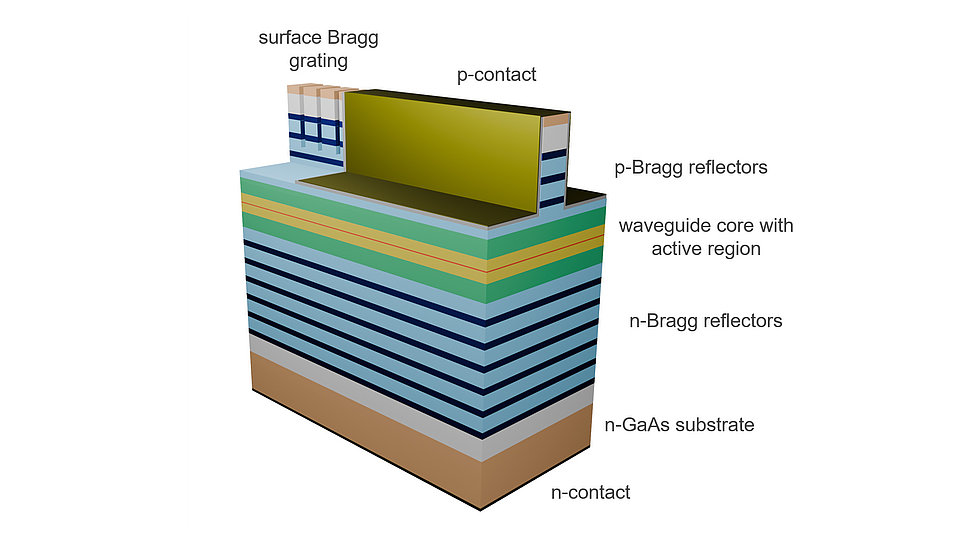Miniaturized entangled photon source for quantum encrypted communication
Single and entangled photons are the building blocks of quantum communication. Their properties help to secure communication channels from eavesdroppers and related attacks. To utilize already existing infrastructure and enable long-distance transmissions, photon sources have to operate in low-loss telecommunications bands. One example is the telecom C-band with wavelengths around 1550 nm.
For communication between several receivers, broad-band sources will be developed to transmit keys by inverse multiplexing. To develop devices that fulfil these technical requirements the project VOMBAT “Miniaturized entangled source in the telecom range based on AlGaAs Bragg reflection waveguides” has been started. In the project, a monolithically- integrated source for entangled photon pairs will be developed. Laser light at 775 nm, which is created from electrical pumping, will both be created and converted within the same waveguide into entangled photon pairs at 1550 nm.
The joint project is supported by the Federal Ministry of Education and Research (BMBF). Five partners from industry and research institutions are to develop an AlGaAs waveguide with high spectral bandwidth for electrical pump operation. Here, the AlGaAs material system enables a complete on-chip integration with an AlGaAs-based pump source for an emission wavelength at 775 nm. This entangled photon source will subsequently be combined with an integrated photonic circuit for wavelength inverse multiplexing.
As a nonlinear material, AlGaAs is suitable for the development of entangled photon sources, using a process known as spontaneous parametric down conversion (SPDC) polarization to create entangled photons. AlGaAs offers promising developments for broad-band photon sources in the telecom C-band due to its low band gap. In addition, it features high nonlinear properties compared to other material platforms and allows for the development of integrated laser sources.
In this project, several concepts of monolithic integration of a photon pair source will be evaluated, and the technological challenges for further commercial realizations are to be investigated. Due reduced complexity, the proposed approach offers significant economic advantages compared to established solutions since it enables a more cost-efficient mass production. The miniaturized source operated at room temperature reduces the cooling requirements, which lowers the power consumption in quantum technological devices.
